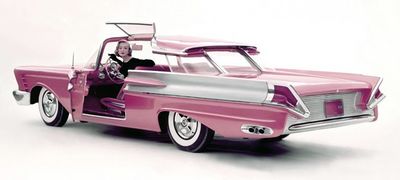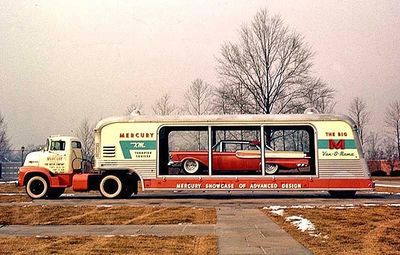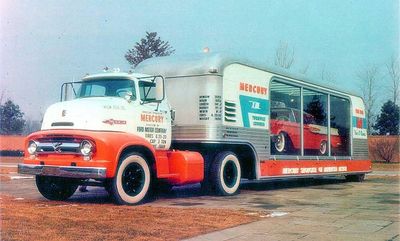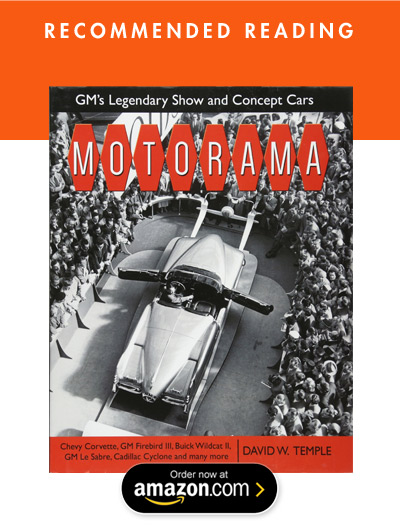1956 Mercury XM Turnpike Cruiser
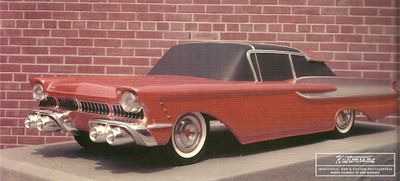


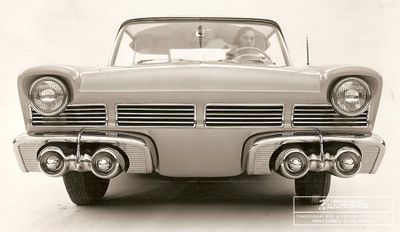


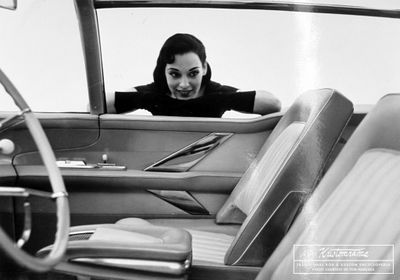


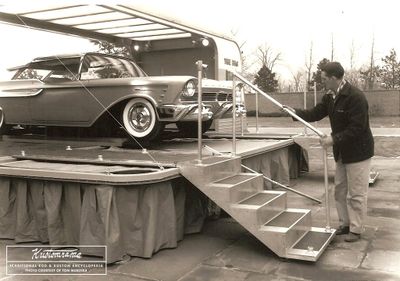

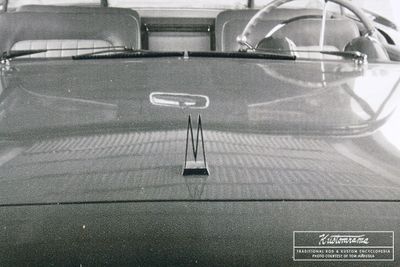
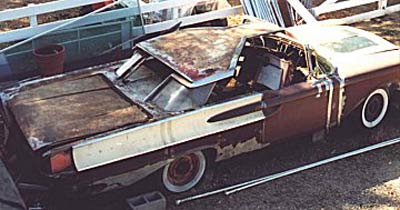

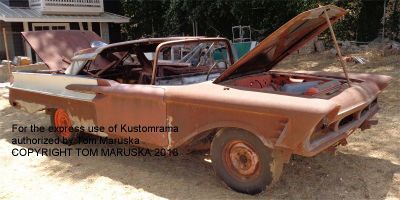


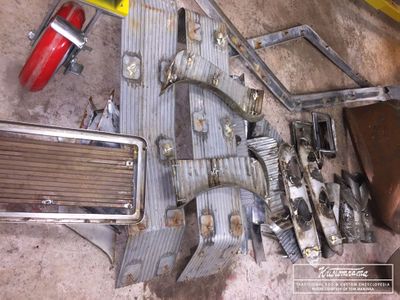

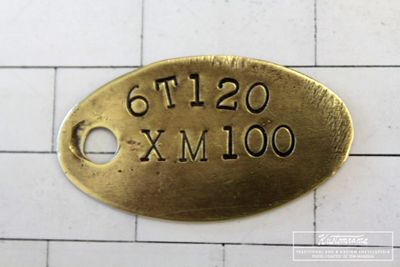

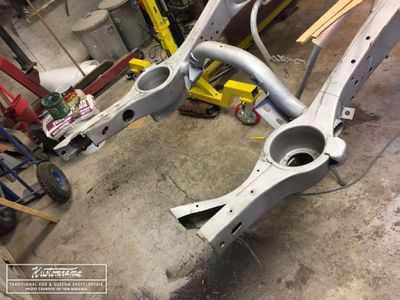

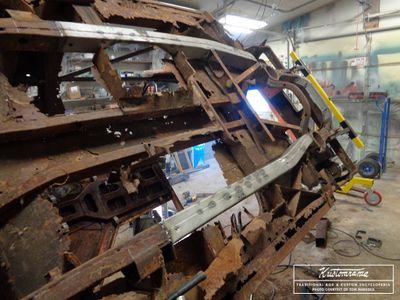




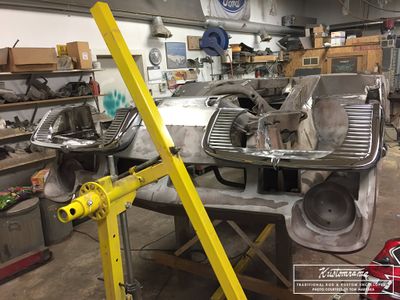
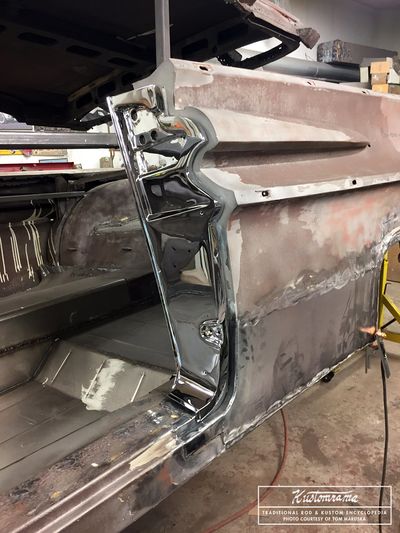
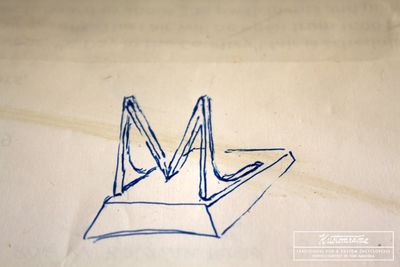


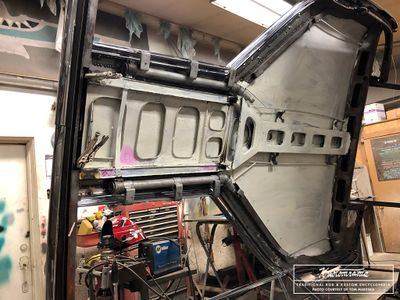


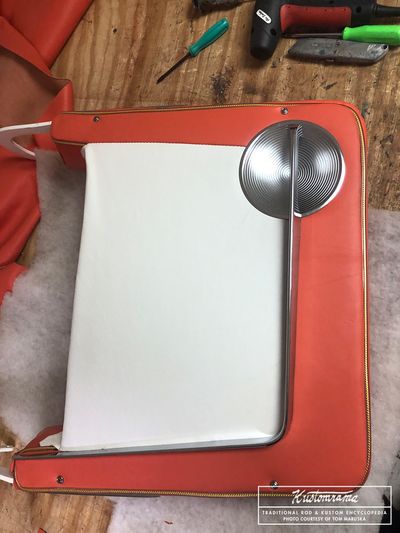
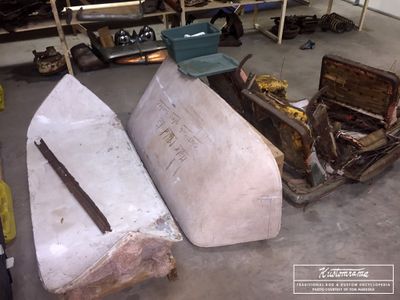

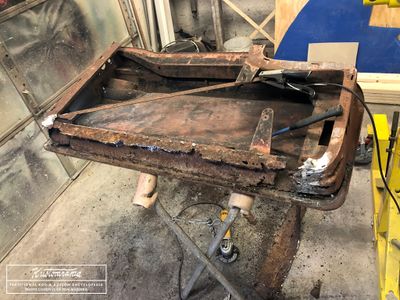


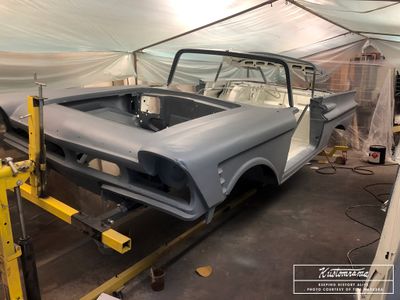

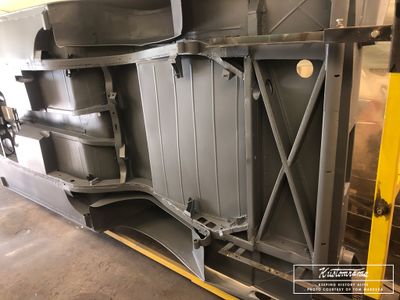
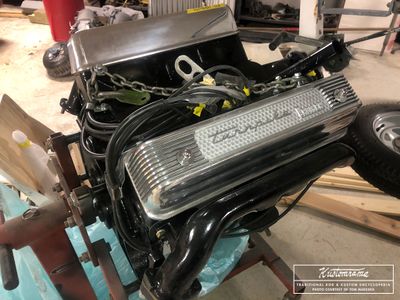

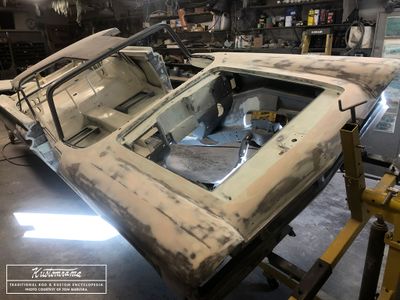
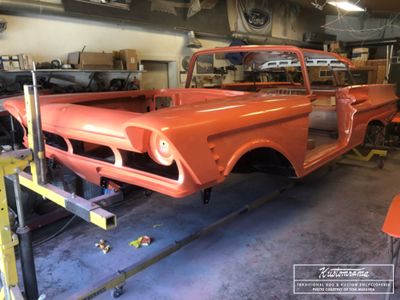


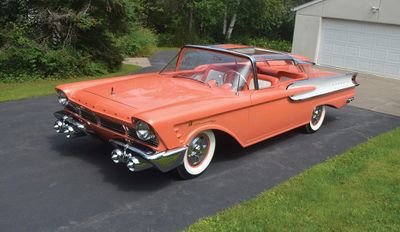

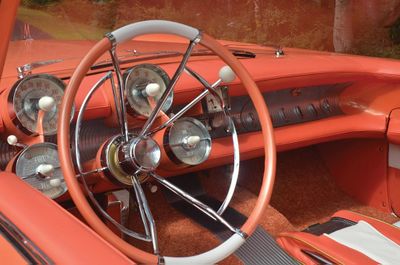
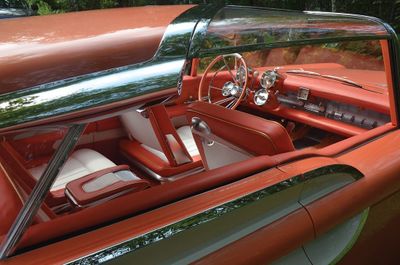

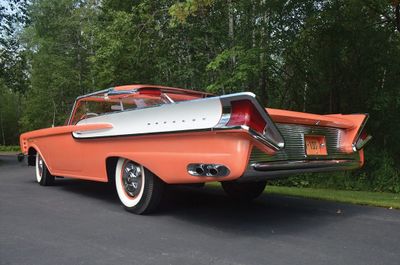
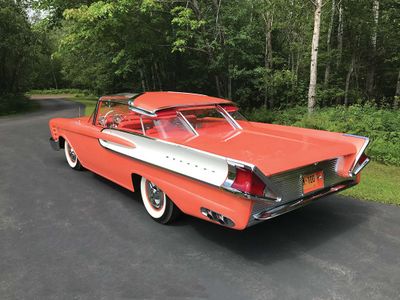
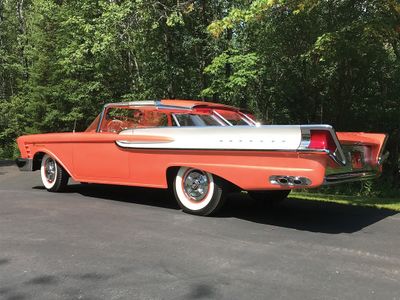
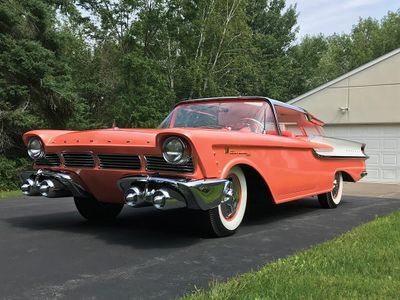

The 1956 Mercury XM Turnpike Cruiser is a concept car by Ford Motor Company. "XM" stands for eXperimental Mercury.
Contents
- 1 The Mandalay
- 2 Najjar/Engel
- 3 Features
- 4 Leather interior
- 5 Built by Ghia
- 6 Extended chassis
- 7 Changed by Ghia
- 8 1956 Cleveland Auto Show Debut
- 9 Production
- 10 Sold to Jim White
- 11 Sold to Baker
- 12 Sold to Ray Sabos
- 13 Sold to Tom Maruska
- 14 The restoration
- 15 Brass parts
- 16 Built from the chassis up
- 17 Complete!
- 18 For Sale by Mecum Auctions
- 19 The Value of the XM Turnpike Cruiser
- 20 More Info and Photos of the restoration
- 21 References
The Mandalay
In April of 1954 John Najjar, who was in charge of the Lincoln-Mercury Pre Production Studio, made a proposal to build five concepts for a new four-passenger show car.[1] These five concepts were given the names Malibu, Monte Carlo, Mystair, Mandalay, and Montauk. Each proposal was drawn in full-scale renderings and shared almost identical dimensions of 212 inches long, 49-51 inches wide, and a 119-inch wheelbase. The Mandalay formed the basis for what ultimately became the XM Turnpike Cruise. Elwood Engel, who was working under George Walker at the time, is credited with changing the name from Mandalay to XM Turnpike Cruiser.[2]
Najjar/Engel
It was normal back then that two competing teams were assigned to a concept car. Elwood Engel and John Najjar became the head of one of the two design teams. The competing team was headed by Gene Bordinat and Don DeLaRossa. Team members included Francis Reith and Larry Shinoda. The XM Turnpike Cruiser was the first major assignment that Shinoda worked on. The two team completed one clay model each, and the one handled by the Najjar/Engel team was selected to become the XM Turnpike Cruiser.[2]
Features
The design of the XM Turnpike Cruiser featured sculptured grille-work with twin jet pods on each side that were set in chrome-plated nacelles. The headlights were hooded and recessed for a forward-thrusting look. Being a driving and foglight combination, the headlights featured delay-action, making them remain on 30 to 40 seconds after being switched off. Deeply fluted side channels flowed smoothly back from the doors into V-shaped taillights. The side channel design is credited to Larry Shinoda, and it is considered his most significant contribution to the design of the car. Horizontally ribbed chrome extended from fender to fender underneath the overhang of the deck lid. Chromed, dual exhaust stacks were placed in each rear fender. Design features included a T-top design with a wrapped backlight surmounted by overhanging sections at the C-pillars. Twin plastic "butterfly" roof panels, hinged from the T, flipped up when the doors opened to facilitate entry. The center portion of the three-section backlight could be lowered for ventilation.
Leather interior
The interior, including the headliner, was all leather.[1]
Built by Ghia
Near the end of 1954 Ford Motor Company decided to build the XM Turnpike Cruiser into a full-scale car. Ghia in Turin, Italy was selected to fabricate the car in metal at a cost of $80,000. A scale plaster model, numerous full-scale drawings, chassis, and drivetrain were sent to Ghia.[2]
Extended chassis
The XM Turnpike Cruiser is a bit longer than other Mercurys from the mid-fifties, and during construction, Ghia added approximately eighteen inches to the chassis that Ford had sent over.[1]
Changed by Ghia
Ghia made several changes to the design during the construction. These were supposedly done without seeking Ford's approval.[2] The model that was sent abroad shows vent windows that were notched into the windshield. These never made it into the car, and Ghia decided to continue the windshield down the A-pillars instead. Other changes included the "gills" in the side of the fenders. These were chromed on the model and painted on the real car. The front bumper was also altered, along with the grille. While the model has vertical slats, the actual car has horizontal slats.[1]
According to Jim Farrel, author of the book "Ford Design Department Concept & Showcars," Ford Styling Center Administrator V.Z. Brink wrote a report regarding the unauthorized changes Ghia made stating that "when future cars were built at Ghia, two and possibly three visits be made to make sure what Ghia was building was being done the way the Styling Center wanted."[1]
1956 Cleveland Auto Show Debut
When the XM Turnpike Cruiser arrived in the US, it was shaved for emblems, and Ford tried a couple different ideas on how they wanted it presented. According to Tom Maruska, "Early photos show quite large “MERCURY” letters in the coves of the quarter panels and eventually they settled on the much smaller letters which I’ll be installing when I get that far." The Turnpike Cruiser concept car was publicly showed for the first time at the 1956 Cleveland Auto Show where it was touted as a "Preview of the Future."[2] After the show, the futuristic car was sent around the country in a semitrailer with big picture windows on each side.[3] The semitrailer was painted to match the car.[2]
Production
A total of 16,681 Mercury Turnpike Cruisers were produced for 1957. Tom McCahill of Mechanix Illustrated wrote that the car was a "Space Age design for earth travel."[2] Due to lack of sales and ongoing technical problems, only 6,407 Turnpike Cruisers were produced in 1958.
Sold to Jim White
After the failure of the Turnpike Cruiser, Jack Reith was removed as head of the Mercury Division, and the Mercury Division was combined with Edsel and Lincoln. The XM Turnpike Cruiser became a symbol of failure for those at Mercury, and it sat outside in a parking lot behind the Lincoln-Mercury Division offices. Tired of seeing the car, Joe Bain and Benson Ford decided to sell the car to Jim White in 1958. Jim was the Vice President of Dearborn Tube and Steel, one of the contractors Ford used to build pre-production vehicles. White, who paid $300 for the car, stored the car outside for more than a decade, and under his possession, it deteriorated and was vandalized.[2]
Sold to Baker
In 1971 White sold the car to a body shop owner named Baker. The price had now increased to $500. At the time, a number of parts were missing and damaged.[2]
Sold to Ray Sabos
Baker sold the car to Ray Sabos for $3,000 in 1979.[2] In 1983 Sabos sold the car to Ray Cosh for $10,000. Cosh had intentions of restoring it, and prior to his ownership, somebody had disassembled the car removing nearly everything except the suspension parts that kept the car rolling and moveable.[1]
Sold to Tom Maruska
In 2018 Tom Maruska of Duluth, Minnesota bought the old concept car with intentions of restoring it. Prior to buying the XM Turnpike Cruiser, Tom has owned and restored the 1963 Ford Thunderbird Italien concept car and the 1954 Mercury XM-800 concept car. In April of 2018, Tom told Sondre Kvipt of Kustomrama that when he was restoring the XM-800 the owner of the XM Turnpike Cruiser heard about it and got in touch with him. "He didn't want to sell at that time and we kept in contact over the years. Out of the blue last August, I asked if he was ready to sell yet and he said he was, so I flew to California to meet him and see the car, and we eventually cut a deal." Tom took delivery of the car in July of 2018.[1]
The restoration
The car was badly rusted when Maruska bought it, and many of the studs that held the trim part to the car were broken off. In January of 2019 Maruska was busy replacing all of the damaged and broken studs with new ones; "One thing to note that I found interesting but after thinking about it is perfectly logical is that the nuts and bolts that hold the car together are all metric. You may recall that Ford had Carrozeria Ghia in Turin Italy build the body. The bolts on the chassis are all SAE as Ford sent the chassis and running gear along with body hardware (hinges and latches) to Ghia to use as a platform for the XMTC."[1]
Brass parts
Nearly all of the parts to be chromed are fabricated from brass as it’s much easier to work with than other harder metals. "Some of the trim pieces on the XM-800 were also made from brass," Maruska told Kustomrama. The only parts that are steel are the front and rear bumpers. Thomas Guilbault did some work on the front bumpers for Ray Sabo back in the 1980s. In February of 2019 Maruska delivered 193 pieces to AIH Chrome Plating in Dubuque, Iowa for new plating. Common in mid 1950s Mercurys was a satin finish on some of the chrome trim, and former owner of the XMTC, Ray Cosh, helped Maruska identify which pieces were to get the satin (matte) finish.[1]
"One reason I wanted to get the chrome done early is that it can change size slightly during the plating process, usually growing slightly and since some of the parts are fit snugly against painted surfaces I want to have the finished trim in hand when I’m doing the finishing work on the body for fitting the chrome pieces to it. Another reason was to get all those parts out of my way, as you can imagine they take up a lot of room when they’re not attached to the car."[1]
Built from the chassis up
The XMTC was built from the chassis up, so the body is not removable from the chassis as it is all welded together. "Ghia modified the chassis to suit the needs of the build and then welded floors onto the chassis, rockers to the floors and fenders and quarters to the rockers and on up to the roof."[1]
Complete!
It's done! After three and a half years, the restoration of the XM Turnpike Cruiser was completed in 2022.[1]
For Sale by Mecum Auctions
Late in 2022, Mecum Auctions announced that the XM Turnpike Cruiser would be one of their main attractions at the Kissimmee 2023 auction January 4-15, 2023 in Kissimmee, Florida.[4]
The Value of the XM Turnpike Cruiser
According to the Mecum Auction listing, the XM Turnpike Cruiser has an estimate between $1,250,000 - $2,000,000 USD.[4]
More Info and Photos of the restoration
Tom created the website www.tommaruskacars.us that he dedicated to chronicling the restoration of the rare concept car. Click here to check it out.
References
Did you enjoy this article?
Kustomrama is an encyclopedia dedicated to preserve, share and protect traditional hot rod and custom car history from all over the world.
- Help us keep history alive. For as little as 2.99 USD a month you can become a monthly supporter. Click here to learn more.
- Subscribe to our free newsletter and receive regular updates and stories from Kustomrama.
- Do you know someone who would enjoy this article? Click here to forward it.
Can you help us make this article better?
Please get in touch with us at mail@kustomrama.com if you have additional information or photos to share about 1956 Mercury XM Turnpike Cruiser.
This article was made possible by:
SunTec Auto Glass - Auto Glass Services on Vintage and Classic Cars
Finding a replacement windshield, back or side glass can be a difficult task when restoring your vintage or custom classic car. It doesn't have to be though now with auto glass specialist companies like www.suntecautoglass.com. They can source OEM or OEM-equivalent glass for older makes/models; which will ensure a proper fit every time. Check them out for more details!
Do you want to see your company here? Click here for more info about how you can advertise your business on Kustomrama.
